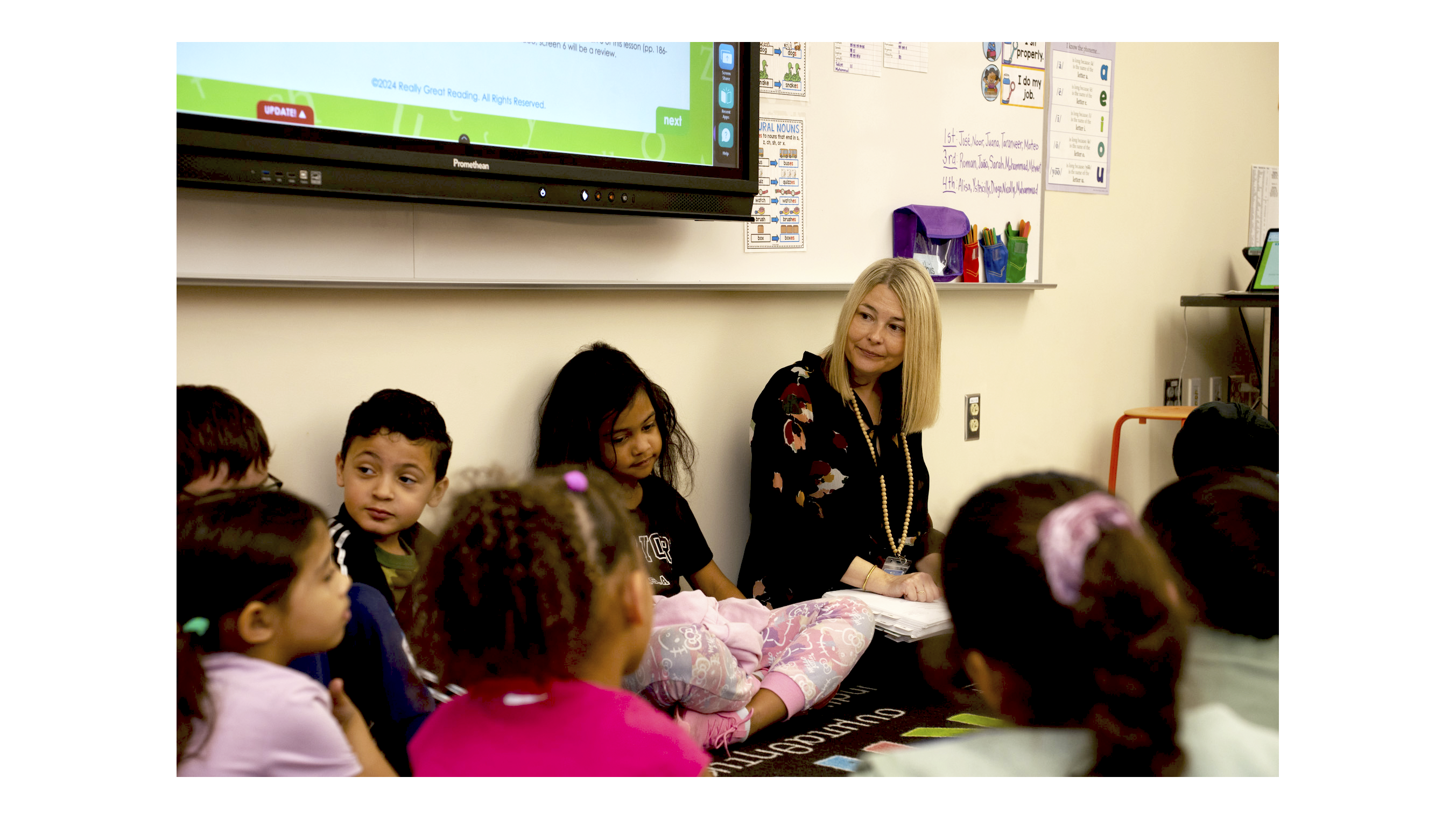
4 minute read
Shared Words, Shared Worlds: The Language of Belonging
By Sam Kulp
Language is a foundational skill on which community and social relationships are formed. Students in English as a Second Language programs gain the tools needed to build these important social connections in an unfamiliar community. ESL programs aim to provide language education to students of all ages, and as students work toward proficiency, the social effects of learning English may look vastly different from one grade level to the next.
North Hills is one of 13 districts that contract with the AIU to provide direct ESL instruction. Maria Magnotta, one of the AIU’s 34 certified ESL teachers, works with English learners at McIntyre Elementary School. In her class, first graders complete worksheets to help them remember plural nouns, but the real exercise happens using English to interact with their peers. She pays close attention to the subtle ways language allows them to form friendships.

“They learn English very quickly,” she said, “and that comes first, the social language, and the academic language comes second.”
In these early grades, where children are still forming school relationships with one another regardless of language, the efforts to connect are mutual. Magnotta notes that the students who are native English speakers are eager to help the English learners in other classes.

“All of the kids here are very accepting of everybody. And when a new kid comes, they all help each other,” Magnotta said. “We had a new kid enroll from Afghanistan and none of the other students speak Dari, except a second grader. But all the kids still help him, no matter what, when they speak to him in English.”
McIntyre’s students are also feeling the connections forming as they exercise their language skills. Emilly and Nathan, two Brazilian students who have been in the ESL program for a year, said learning English has helped them to make a lot of friends with the rest of the students. José, a student from Guatemala, speaks English a lot outside of the ESL classroom, and has plenty of friends he plays tag with during recess.

Finding community within the school environment can be more challenging for some English learners than others, especially at the high school level. At North Hills High School, AIU ESL instructor DeAnna Richey observes this as she follows the language development of her students.
“In high school, it’s hard because so many friend groups have already been established,” Richey said. “In my class, a lot of the students are moving [here] in high school. A lot of them are new to the country within the last four years So, it’s hard for them to blend.”

Learning a language is a difficult endeavor, and English learners can find comfort in the fact that they aren’t alone in their struggles. ESL classrooms serve as a space where these students can meet others on the same path to English proficiency and help each other reach their common goal.

Perguntino, one of Richey’s students from Equatorial Guinea, became fluent in four other languages before beginning his education in English. He frequently shares tips he picked up in his experience learning languages with the other English learners. “Since I’ve been learning [English] for five years now, it’s easy to tell people to watch movies and listen to music to help them with their English,” he said.
Richey also observes that her students’ shared experience of feeling separate from English speakers sets the groundwork for valuable relationships within ESL classrooms. “The communities start in ESL. Their first few friends are actually in classes with me. That’s where they feel comfortable talking— where everybody is learning,” she said.

Richey works to nurture that culture of understanding as more students begin their English-learning journey. “I always try to remind them to remember that feeling, that first day here. That really makes it a more empathetic, compassionate feeling in my room,” Richey said.
Companion articles:

